Portuguese immigration to Hawaii
Portuguese immigration to Hawaii began in 1878 when Portuguese residents made up less than 1% of the Island population. However, the migration that began that year of laborers from Madeira and the Azores to work in the sugarcane plantations rapidly increased the Portuguese presence in Hawaii, and by the end of 1911 nearly 16,000 Portuguese immigrants had arrived.
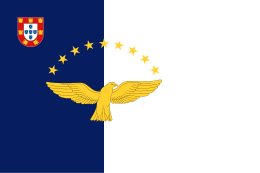 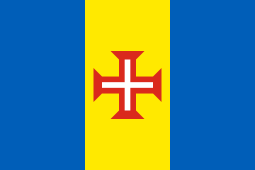 Flags of the Azores and Madeira | |
| Total population | |
|---|---|
| 4.3% of Hawaiians in 2008 claimed Portuguese Ancestry[1] | |
| Languages | |
| Portuguese, English, Hawaiian | |
| Religion | |
| Roman Catholic |
Early immigration
.jpg)
The Hawaiian census of 1878 showed that, out of a kingdom of 57,985 people, only 438 residents, which was less than 0.8% of the population, were Portuguese.[2] Most of these Portuguese residents had been born in either the Azores or Madeira Islands, and nearly all had arrived as sailors on whaling ships. Although only a few brought their wives or were joined by them later, women made up only about one-eighth of this tiny immigrant community.[3] Despite the fact that prior to 1878 so few Portuguese had made their way to the Hawaiian Islands, those that did found opportunity and tended to stay.[4]
Conditions in Hawaii in 1878 were conducive to immigration. King Kalākaua, who had recently ascended the Hawaiian throne, encouraged closer ties with Europe, and a growing Hawaiian economy, due largely to increased sugar exports to California, created a demand for laborers to work the sugarcane plantations.[4][5] Because the native Hawaiian workers had been decimated by disease, there were not enough laborers to supply the sugarcane plantations, which led in 1852 to the first importation of Chinese workers. So many Chinese were brought in that by 1878 they made up nearly 10% of the population.[2][6] Although the Chinese worked hard, they were accused of gambling, prostitution and opium use, and a search began for alternate sources of labor. This led both the Hawaiian government and the plantation owners to offer incentives, and concessions not given the Chinese nor other Asian ethnic groups, to attract immigrants of European descent who were willing to work in the cane fields.[7]
Immigration of 1878 to 1911
Jason Perry (Jacinto Pereira), a Portuguese settler who served as the Portuguese Consul to Hawaii, suggested in 1876 to plantation owners of the Planters' Society (a predecessor of the Hawaiian Sugar Planters' Association) that the Madeira and Azores Islands of Portugal might be ideal sources of reliable workers.[4] Portuguese colonists had first settled these islands in the Middle Ages, and the terrain and subtropical climate were very similar to that of the Hawaiian Islands. More important though, sugarcane had been the mainstay of the economy in Madeira and the Azores for over 400 years, and most of the population was involved in one way or another in the sugarcane industry.[6]
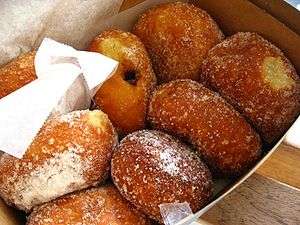
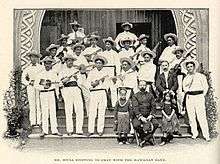
Intrigued by Perry's suggestion, the Planters' Society began recruiting Portuguese contract workers, first in 1878 from the Madeira Islands, and then two years later from the Azores as well. Several ships between 1878 and 1887 brought to Hawaii more than 3,300 Portuguese men from these islands, but because many of the men brought their wives, children, and other relations as well, there was an actual immigration during these years of about 10,700 Portuguese.[4] Whereas contracts for the Chinese workers that preceded them generally stipulated single men only, the Portuguese were allowed to bring their families, an incentive that the plantation owners hoped would provide stability.[6] Prior to independence in 1975, many Cape Verdeans emigrated to Hawaii from drought-stricken Portuguese Cape Verde, formerly an overseas province of Portugal. Because these people arrived using their Portuguese passports, they were registered as Portuguese immigrants by the Hawaiian (and later, the American) authorities.
Portuguese immigration to the islands slowed after 1887, which was the same year that King Kalākaua was stripped of power, and about the same time that importation of other ethnic groups increased. Nonetheless, Portuguese immigration continued, and by the end of 1911 almost 16,000 Portuguese had arrived. Unfortunately, the more affluent members of Hawaiian society tended to view these newcomers as inferior or "low class", and growing resentment at being treated as "second-class citizens", resulted in many Portuguese later emigrating to the mainland United States, particularly California, in search of equality and opportunity.[6][8] Though many left, many stayed and by 1910 Portuguese residents made up 11.6% of the population of Hawaii.[9]
Immigrant culture and traditions
Native Hawaiian speakers called the Portuguese immigrants who came to their country "Pukikī." These newcomers were devout followers of the Roman Catholic faith with strong family ties. Most were short, with slender builds, and dark skin from long hours of working out under the sun in the cane fields.[10] Many in fact were so dark that their race on some of the early U.S. census returns is listed as black, which contributed to prejudice against them.[11] Because few of these immigrants could read or write, they had strong oral traditions, and they retained much of the culture and traditions they brought with them.[10][12]
One popular Portuguese tradition in Hawaii today is the making of malasadas, which are deep-fried pastries, similar to the beignet of New Orleans, that traditionally have no holes or fillings, but are coated in granulated cane sugar. They were first made by Hawaiian residents from the Madeira and Azores Islands, who would use up butter and sugar prior to Lent by cooking malasadas. These pastries are an important part in Madeira and the Azores of the "Terça-feira Gorda", a festival also known as the Carnaval that is the same holiday as "Fat Tuesday" or "Mardi Gras" elsewhere. This day in Hawaii is called "Malasada Day", and it dates back to the time of the 19th-century sugarcane plantations.[13]
Another popular Portuguese tradition in Hawaii is the Holy Spirit Festival (Festa do Espírito Santo), which since 1901 is celebrated each May with a parade and feast. This three-day event is not an official church holiday, but a traditional observance that began in the 18th century with the Cult of the Holy Spirit in the Azores. It usually starts on a Friday night, followed on Saturday by decorating religious statues for the festivities to follow. Then on Sunday a young woman is chosen as Queen Isabel the 6th queen of Portugal, and she and her court lead a colorful parade. The final event is a mass with a "Blessing of the meat and bread" by a priest, after which Isabel is crowned as the Holy Ghost Queen. A feast is then held in "a tradition of charity and feeding the poor," where food is served to all present. The foods of this feast typically include malasadas (pastries), paodoce (sweet bread), bean soup, Portuguese sausages, and bowls of beef and fish marinated in wine.[14][15]
The best-known Portuguese contribution to Hawaiian culture is the ukulele, based on the traditional Portuguese braguinha (cavaquinho). The introduction of the ukulele is generally credited to Madeiran cabinet makers Manuel Nunes, Augusto Dias and José do Espírito Santo, who came to the Islands in 1879 on the British clipper SS Ravenscrag.[16][17] The Hawaiian Gazette in late August 1879, two weeks after the arrival of the Ravenscrag, reported that "Madeira Islanders recently arrived here have been delighting the people with nightly street concerts." The article then mentions "their strange instruments, which are a kind of cross between a guitar and banjo."[18]
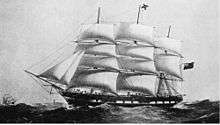
.jpg)
How they came to Hawaii
At least 24 different ships from 1878 to 1911 brought almost 16,000 Portuguese immigrants to Hawaii. Although mainly from Madeira and the Azores, there were also contingents from the eastern United States, mainland Portugal, and from the Portuguese community of Montevideo, Uruguay.[19] Although conditions on board these ships from 1882 on improved dramatically, as most immigrants by then came by steamship, the first arrivals to Hawaii from Madeira and the Azores spent up to three months at sea in cramped quarters on sailing ships. Strong currents crossing the Atlantic, and rough seas when coming around Cape Horn at the tip of South America made for a perilous voyage.[20] When the SS Ravenscrag reached port with its load of immigrants in 1879 after 123 days at sea, three children had perished during the voyage.[21] Even three years later when the first group of immigrants to reach Hawaii by steamship arrived in 1882 on the SS Monarch after 57 days at sea, 13 children had died on the voyage.[22]
| Ship Name | Type of Vessel | Flag | Arrival Date | Port of Origin | Days at Sea | Men | Women | Children | Total |
|---|---|---|---|---|---|---|---|---|---|
| Priscilla | Bark | German | 30 September 1878 | Funchal, Madeira | 116 days | 80 | 40 | 60 | 180 |
| Ravenscrag | Clipper | British | 23 August 1879 | Funchal, Madeira | 123 days | 133 | 110 | 176 | 419 |
| High Flyer | Bark | British | 24 January 1880 | São Miguel, Azores | 99 days | 109 | 81 | 147 | 337 |
| High Flyer | Bark | British | 2 May 1881 | São Miguel, Azores | 130 days | 173 | 66 | 113 | 352 |
| Suffolk | Bark | British | 25 August 1881 | São Miguel, Azores | 102 days | 206 | 100 | 182 | 488 |
| Earl Dalhausie | Bark | British | 27 March 1882 | São Miguel, Azores | 113 days | 94 | 82 | 146 | 322 |
| Monarch | Steamship | British | 8 June 1882 | São Miguel, Azores | 57 days | 202 | 197 | 458 | 857 |
| Hansa | Steamship | British | 15 September 1882 | Azores | 70 days | 307 | 286 | 584 | 1177 |
| Abergeldie | Steamship | British | 4 May 1883 | Azores | 62 days | 264 | 190 | 484 | 938 |
| Hankow | Steamship | British | 9 July 1883 | Azores (São Miguel) & Madeira | 66 days | 427 | 317 | 718 | 1462 |
| Bell Rock | Steamship | British | 1 November 1883 | Azores | 76 days | 396 | 294 | 715 | 1405 |
| City of Paris | Steamship | British | 13 June 1884 | Azores (São Miguel) & Madeira | 74 days | 295 | 199 | 330 | 824 |
| Bordeaux | Steamship | British | 3 October 1884 | Madeira | 72 days | 273 | 173 | 262 | 708 |
| Daca | Bark | British | 19 January 1885 | Madeira | 114 days | 63 | 50 | 165 | 278 |
| Stirlingshire (Sterlingshire) | Clipper | British | 4 March 1886 | Madeira | 112 days | 157 | 107 | 203 | 467 |
| Amana | Steamship | British | 23 September 1886 | Funchal, Madeira | 142 days | 146 | 116 | 239 | 501 |
| Thomas Bell | Bark | British | 13 April 1888 | Madeira | 156 days | 117 | 62 | 163 | 342 |
| Braunfels | Steamship | German | 4 April 1895 | Ponta Delgada, Azores | 68 days | 274 | 124 | 259 | 657 |
| Victoria (Parthia) | Steamship | British | 13 September 1899 | Madeira | 67 days | 215 | 56 | 72 | 343 |
| Warrimoo | Steamship | New Zealand | 24 December 1900 | Vancouver, U.S. | 10 days | 60 | 14 | 18 | 92 |
| Aorangi[24] | Steamship | New Zealand | 16 February 1901 | Vancouver, U.S. | 8 days | 9 | 7 | 7 | 23 |
| Suveric | Steamship | British | 1 December 1906 | Uruguay (Montevideo) & Azores (Fayal) | 52 days | 459 | 283 | 582 | 1324 |
| Kumeric | Steamship | British | 27 June 1907 | Funchal, Madeira | 58 days | 333 | 306 | 475 | 1114 |
| Swanley | Steamship | British | 14 December 1909 | Azores (P Delgada) & Madeira (Funchal) | 49 & 55 days | 337 | 221 | 310 | 868 |
| Orteric (Osteric)* | Steamship | British | 13 April 1911 | Portugal (Oporto & Lisbon) and Gibraltar | 48 days (from Gibraltar) | 547 | 373 | 531 | 1451 |
| Total | 16,929 |
Hawaiians of Portuguese descent
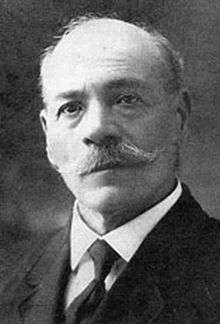
Although Portuguese sailors probably visited Hawaii as early as 1794, the earliest Portuguese immigrant of whom there is official record, and the first Portuguese immigrant of note, was Dr. João (John) Elliott de Castro, who arrived in 1814 and became the personal physician, and retainer King Kamehameha I.[26] Since Castro's day there have been many Portuguese-Hawaiians of note, some of whom are listed below.
- Stephen Peter Alencastre (1876–1940), Catholic Bishop of Hawaii.
- John Gaspar Machado (1846-1937) Constructed Hawaii’s first formidable coffee mill in 1880 by Napo‘Opo‘O, Honaunau-Napoopoo, Hi near Kealakekua Bay on the Big Island near the Kona coffee growing region.
- Bryan Baptiste (1955–2008), Former Mayor of the County of Kauai.
- Bernard Carvalho (born 1961), Current Mayor of the County of Kauai, former pro football player for the Miami Dolphins.
- Auli'i Cravalho (born 2000), actress known for her role in the Disney Film Moana.
- Tom Correa (born 1956), author and blogger of The American Cowboy Chronicles.
- Frank De Lima (born 1949), comedian.
- Frank Ferera (1885–1951), ukulele and Hawaiian steel guitar player.
- Sid Fernandez, (born 1962), professional baseball player.
- Kurt Gouveia (born 1964), professional football player.
- Billy Martin, (1928–1989), baseball manager. Though born in California, his father came to Hawaii from the Azores.
- Glenn Medeiros (born 1970), singer and songwriter.
- Leroy A. Mendonca (1932–1951), posthumous Korean War recipient of the Medal of Honor.
- Ernest Morgado (1917–2002), businessman, created huli-huli chicken.
- Manuel Nunes (1843–1922), ukulele maker, and self-proclaimed inventor of the ukulele.[27]
- Prince Oana (1910–1976), professional baseball player.
- Jonah Ray (born 1982), comedian.
- Clarence Richard Silva (born 1949), Catholic Bishop of Honolulu.
- Freddie Tavares (1913-1990), designer of Fender Stratocaster
- Shane Victorino (born 1980), professional baseball player.
- Wesley Correia Born 1978, professional mixed-martial arts fighter.
- Carl "Bobo" Olson (1928-2002) World Middleweight Boxing Champion of the world.
- Kanekoa Teixeira
See also
References
- The demographics shown represent the combined statistics from Congressional Districts 1 and 2 from the following sources:
U.S. Census (2009). "Congressional District 1, Hawaii (111th Congress) - Selected Social Characteristics in the United States" (PDF). hawaii.gov - Official Website of the Aloha State. Retrieved 29 October 2013.
U.S. Census (2009). "Congressional District 2, Hawaii (111th Congress) - Selected Social Characteristics in the United States" (PDF). hawaii.gov - Official Website of the Aloha State. Retrieved 29 October 2013. - Thrum, Thomas G., compiler (1903). "Comparative table of Nationality of population of Hawaiian Islands at various census periods since 1872". Hawaiian Almanac for 1903. Thos. G. Thrum: 34.CS1 maint: multiple names: authors list (link)
- Rodgers, C.T. (1891). Report of the General Superintendent of the census, 1890. Honolulu, Hawaii: R. Grieve Steam Book and Job Printer. p. 23.
- Marques, Augustus (1886). Thrum, Thomas G. (ed.). "Portuguese immigration to the Hawaiian Islands" (PDF). Hawaiian Almanac and Annual for 1887 - A Handbook of Information. Honolulu, Hawaii: Press Publishing Company: 74–78.
- Kuykendall Ralph S. (1967). The Hawaiian Kingdom: 1874-1893, the Kalakaua dynasty. Honolulu, Hawaii: University of Hawaii Press. ISBN 0870224336.
- Coman, Katharine (1903). The history of contract labor in the Hawaiian Islands. New York: American Economic Association with The MacMillan Company. pp. 27–32.
- Coman, Katharine (1903). "Opposition to the chinese". The history of contract labor in the Hawaiian Islands. New York: American Economic Association with The MacMillan Company: 35–42.
- Marques, Augustus (1910). Thrum, Thomas G. (ed.). "The Portuguese in Hawaii". Hawaiian Almanac and Annual for 1911 - A Handbook of Information. Honolulu, Hawaii: Press Publishing Company: 74–78.
- United States Bureau of Statistics (1913). "1910 Statistics for Hawaii". Thirteenth census of the United States taken in the year 1910. United States: Government Printing Office: v. 2, p. 10.
- Pap, Leo (1981). The Portuguese-Americans (The Immigrant Heritage of America). Boston, Massachusetts: Twayne Publishers / G. K. Hall & Co. ISBN 0805784179.
- The race of many Portuguese immigrants and their families is listed as black in the 1910 U.S. Census, which is available online from a number of subscription-only genealogy sites.
- Takaki, Ronald T. (1983). Pau Hana: Plantation Life and Labor in Hawaii, 1835-1920. Honolulu, Hawaii: University of Hawaii Press. ISBN 0824809564.
- See the Wikipedia article on Malasadas.
- "Portuguese festival honors holy day". Honolulu Star Bulletin (newspaper). Honolulu, Hawaii. June 10, 2006. v. 11, Issue 161. Retrieved 22 October 2013.
- "Portuguese Holy Ghost Festival and Traditional Practices: A Local Legacy". America's Story from America's Library. Retrieved 22 October 2013.
- King, John and Tranquada, Jim (2003). "A new history of the 'ukulele, 1838-1915". Hawaiian Journal of History: v. 37, p. 10–32.CS1 maint: uses authors parameter (link)
- King, John & Tranquada, John (2007). "A Strum Through 'Ukulele History, from Madeira to Hawaii to the San Francisco Bay (online version)". Museum of Craft and Folk Art. Archived from the original on 1 November 2013. Retrieved 22 October 2013.
- "Portuguese Musicians". Hawaiian Gazette. Sep 3, 1879. p. 3.
- Portuguese Genealogical Society of Hawaii. "Portuguese Immigration to Hawaii, 1878-1913". Retrieved 22 October 2013. This is a list of ships and passenger records compiled by the Portuguese Genealogical Society of Hawaii from the Harbor Master's Records Archived 2013-09-27 at the Wayback Machine in the State Archives of Hawaii. Additional information on these ships was obtained from articles on individual ship arrivals in the Pacific Commercial Advertiser (newspaper) and the Hawaiian Gazette (newspaper), both of which are available at the Chronicling America website of the Library of Congress.
- A description of the 1879 voyage of the SS Ravenscrag around Cape Horn is given by Elma (née Tranquada) Cabral in a December 1946 article titled "Grandpa Was A Troubadour" in Paradise of the Pacific Magazine (v. 58, n. 12, p. 17-19) that is based on stories that her mother Carolina Dias, a nine-year girl on the ship, had told her. Another account of the same voyage that was dictated by Frances de Harne (née Francisca Gomes Camacho) to her daughter Mary Walsh appears at Walsh, Mary & Clark, Mike (2013). "History of the de Harne family in Hawaii". Retrieved 28 October 2013. Frances was a ten-year girl old on the voyage.
- "Arrival of Immigrants". The Pacific Commercial Advertiser. August 30, 1879. p. 3. Retrieved 30 October 2013.
- Smith, William O. (1883). "Portuguese Immigrants". Planter's Monthly. Honolulu, Hawaii: Planter's Labor & Supply Co. with the Hawaiian Gazette Office: v. 1, p. 74.
- Felix, John Henry & Senecal, Peter F. (1978). The Portuguese in Hawaii. Honolulu, Hawaii: self-published, Centennial edition limited to 2000 copies. pp. 27–30.
- "Passengers Arrived". The Honolulu Republican. February 17, 1901. p. 2.. The newspaper article states 39 Portuguese laborers, but the ships manifest (available at Ancestry.com - subscription required) lists 9 Portuguese men, 7 women and 7 children, all U.S. residents.
- "Orteric arrives with many laborers". The Hawaiian Gazette. Honolulu, Hawaii. April 14, 1911. p. 1.
- Yzendoorn, Reginald (1927). Catholic Mission in the Hawaiian Islands. Honolulu, Hawaii: Honolulu Star Bulletin, Ltd. pp. 222–223.
- Ukulele Hall of Fame Museum (2012). "Manuel Nunes (1843 - 1922) 1998 Hall of Fame Inductee". Retrieved 22 October 2013.
Further reading
- Kuykendall Ralph S. (1967). The Hawaiian Kingdom: 1874-1893, the Kalakaua dynasty. Honolulu, Hawaii: University of Hawaii Press. ISBN 0870224336.
- Pap, Leo (1981). The Portuguese-Americans (The Immigrant Heritage of America). Boston, Massachusetts: Twayne Publishers / G. K. Hall & Co. ISBN 0805784179.
- Curammeng Martins Kahealani (2018). They Came in Ships to Terra Nova: Portuguese Immigration to Hawaii 1878-1913. Hilo, Hawaii: Legacy Publishing. ISBN 1732795800.
| Wikimedia Commons has media related to Portuguese immigration to Hawaii. |
